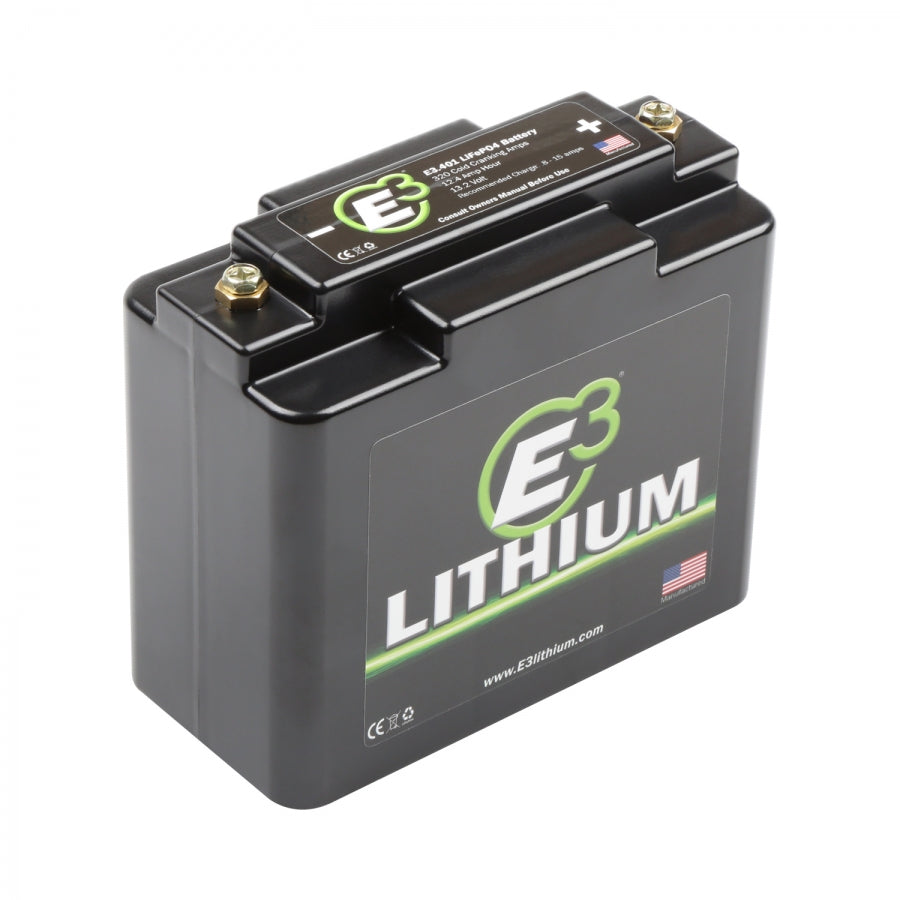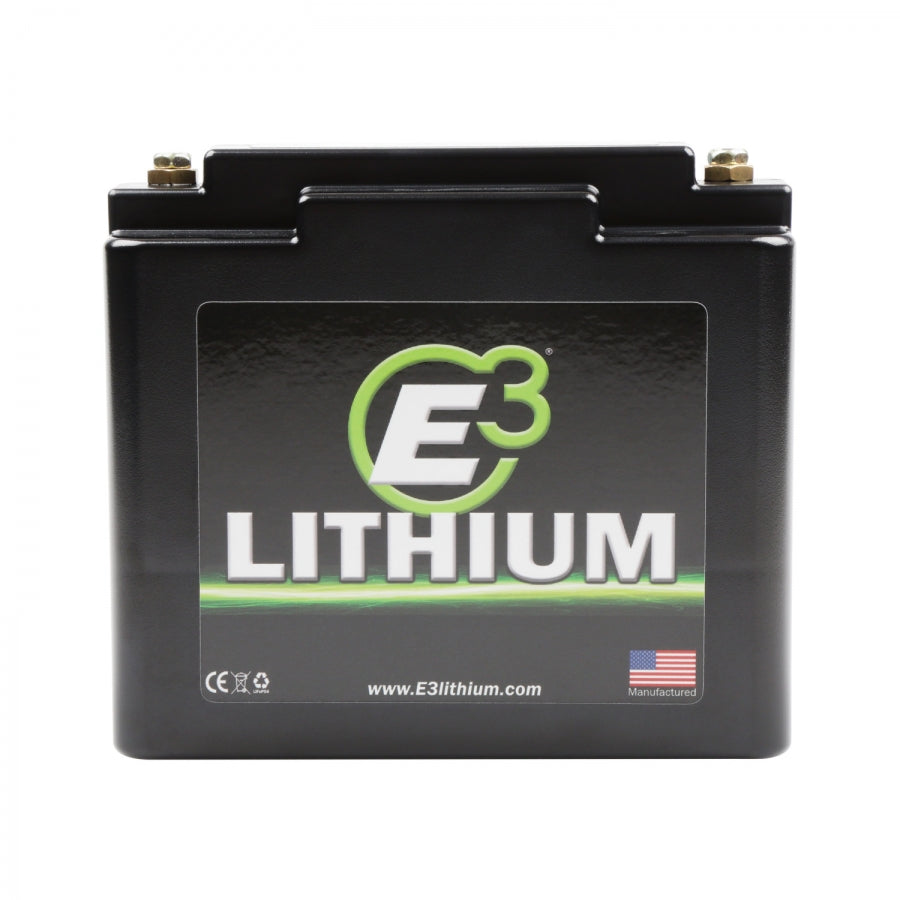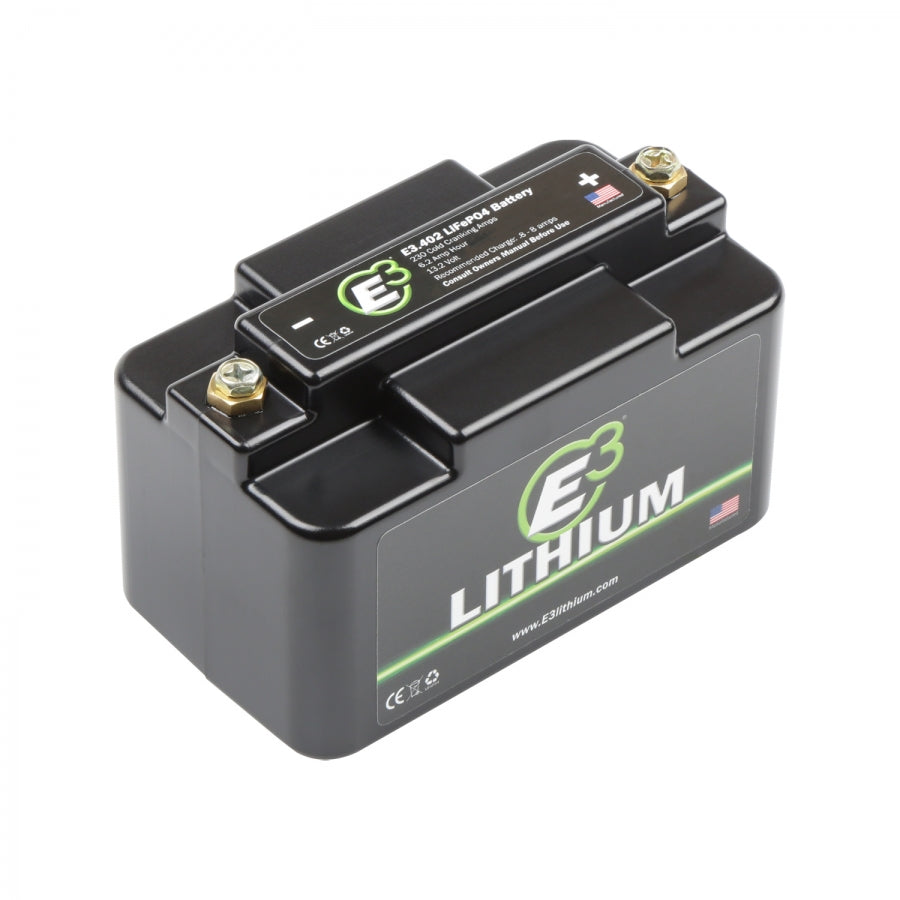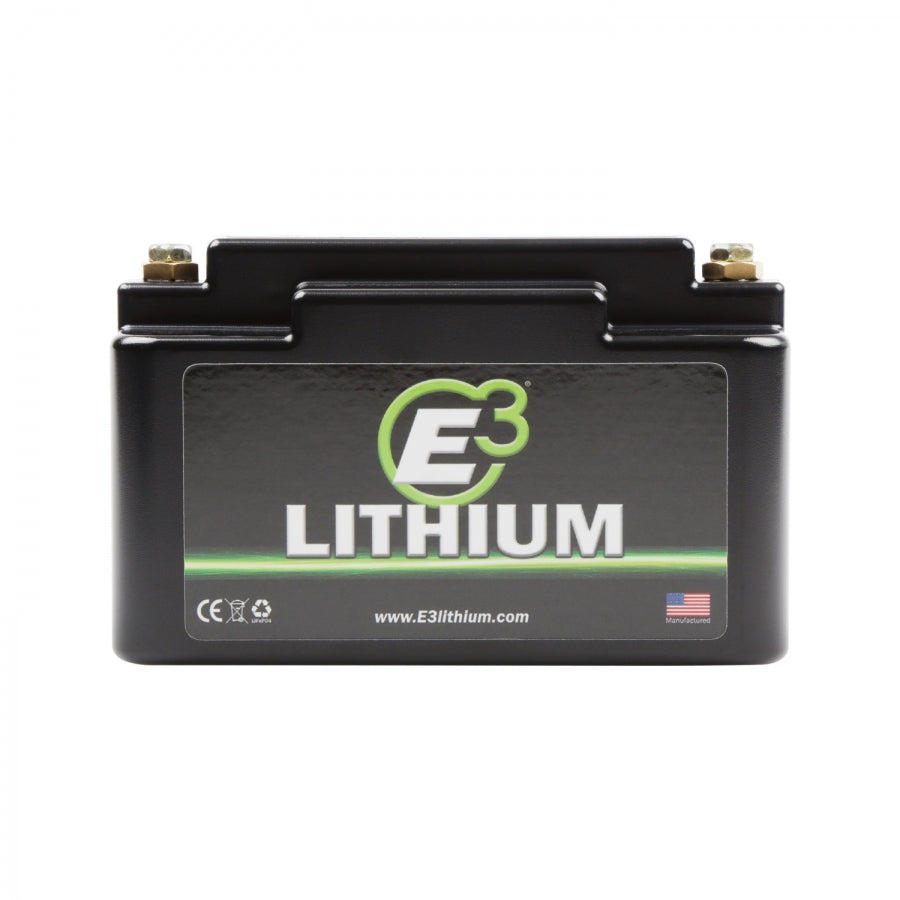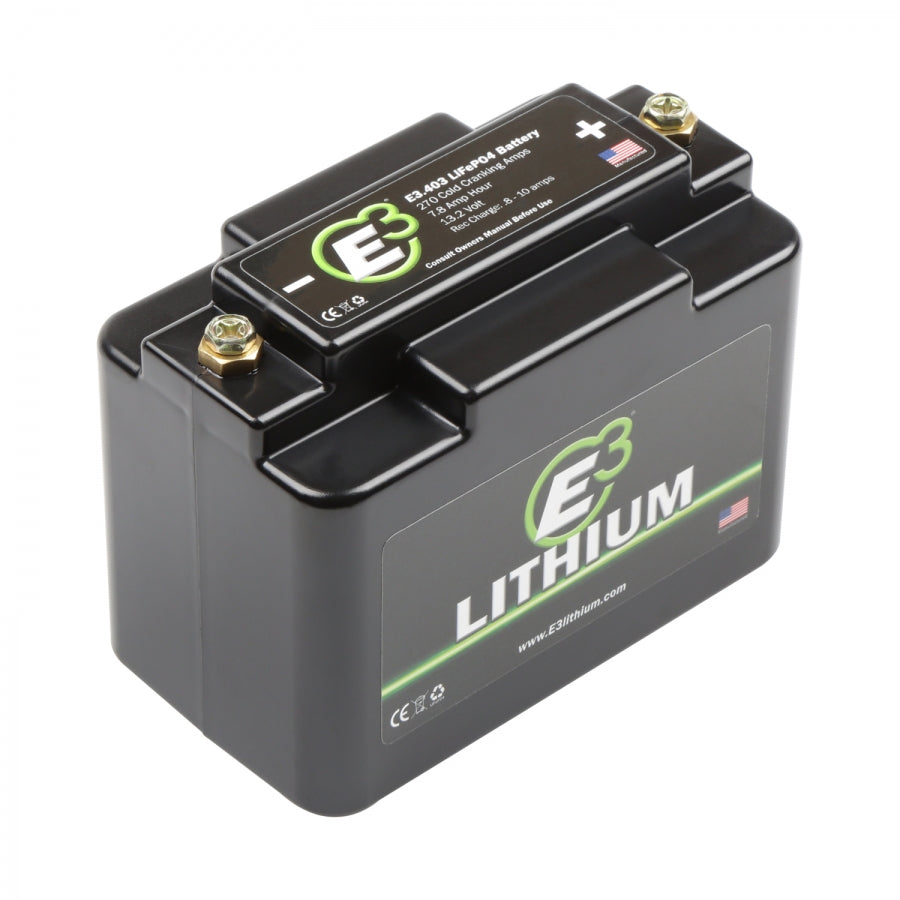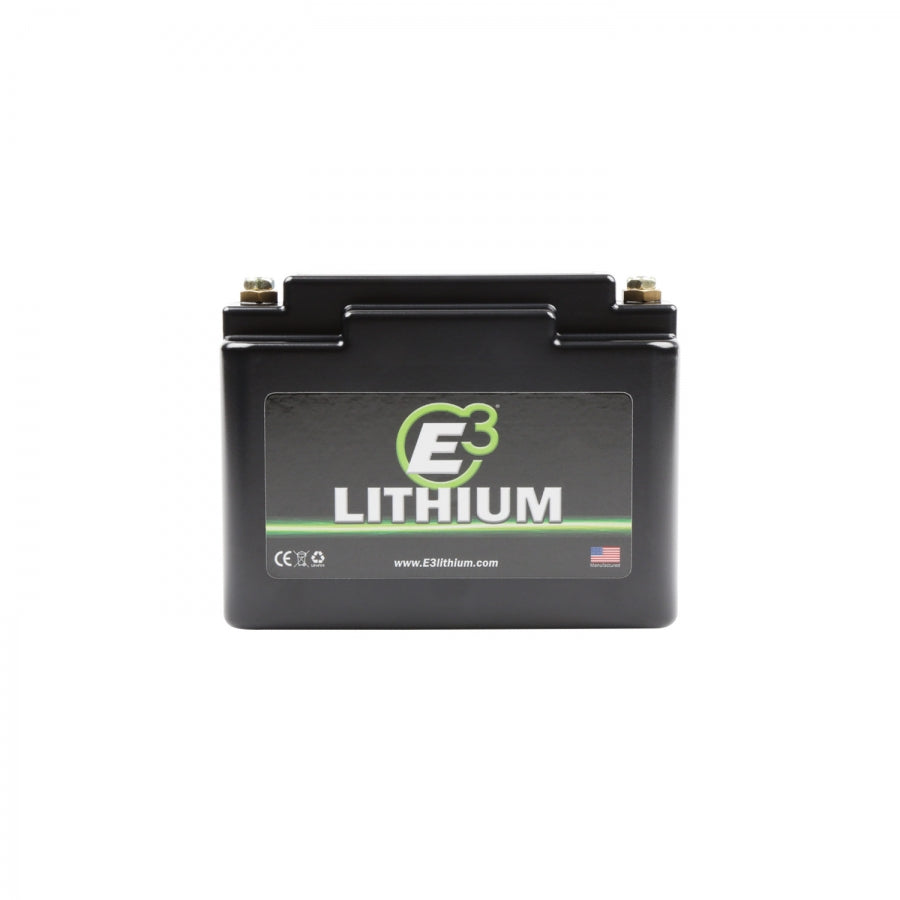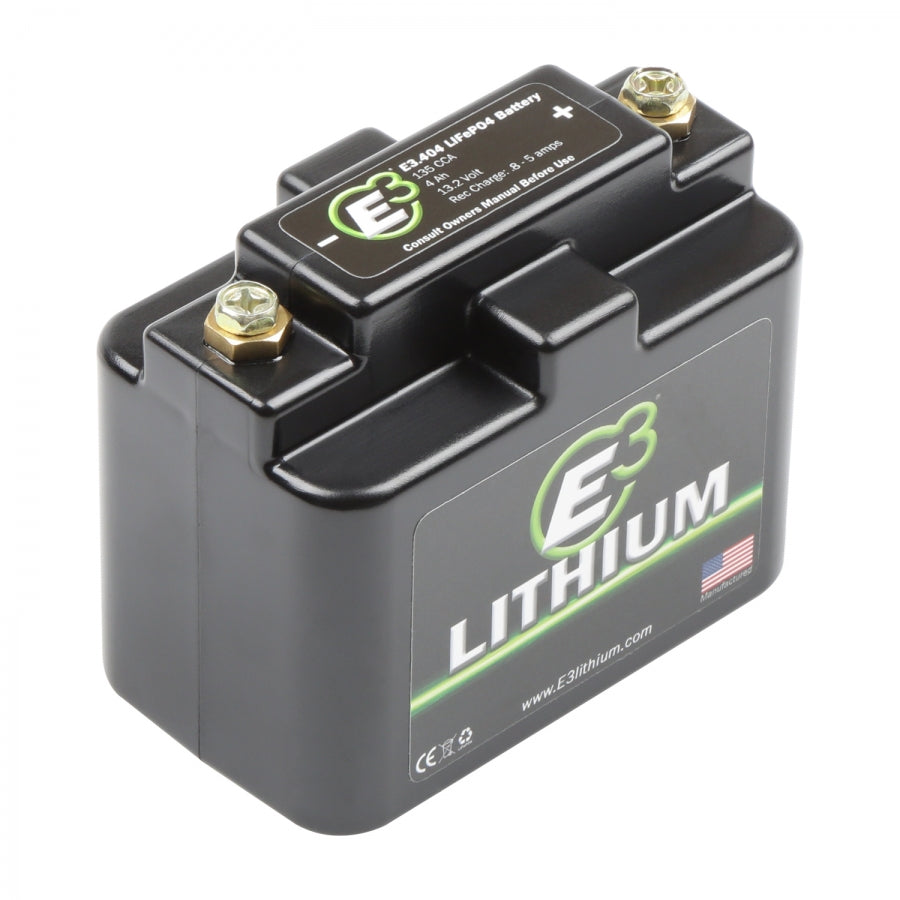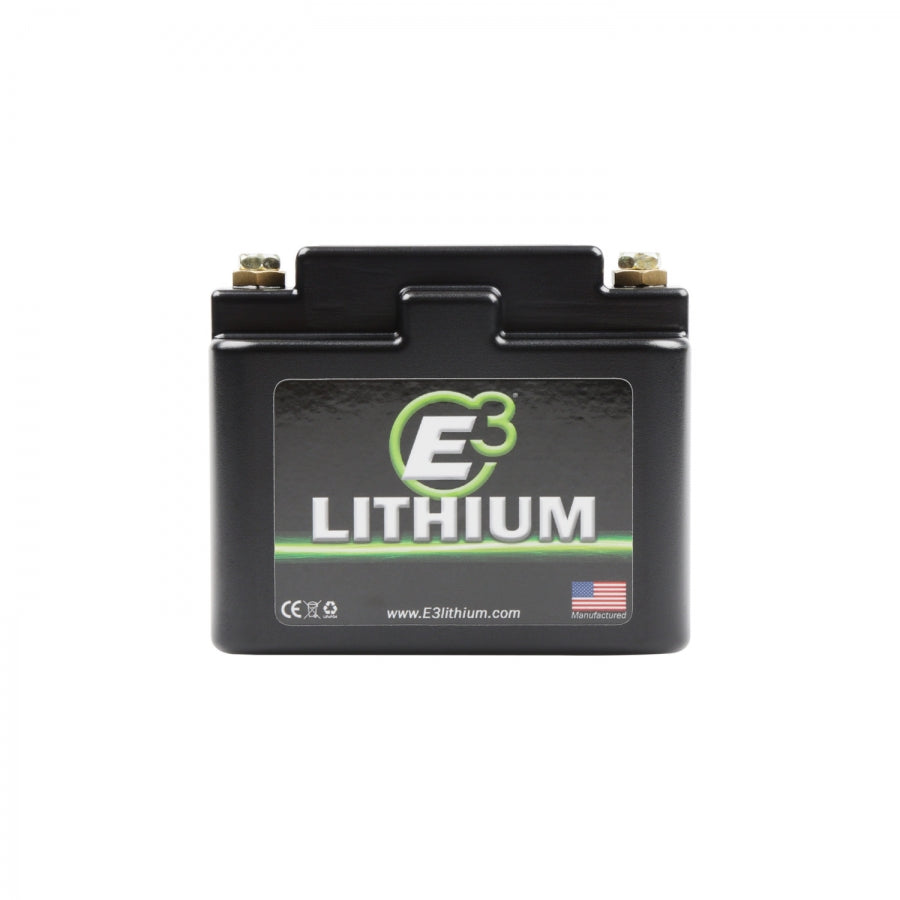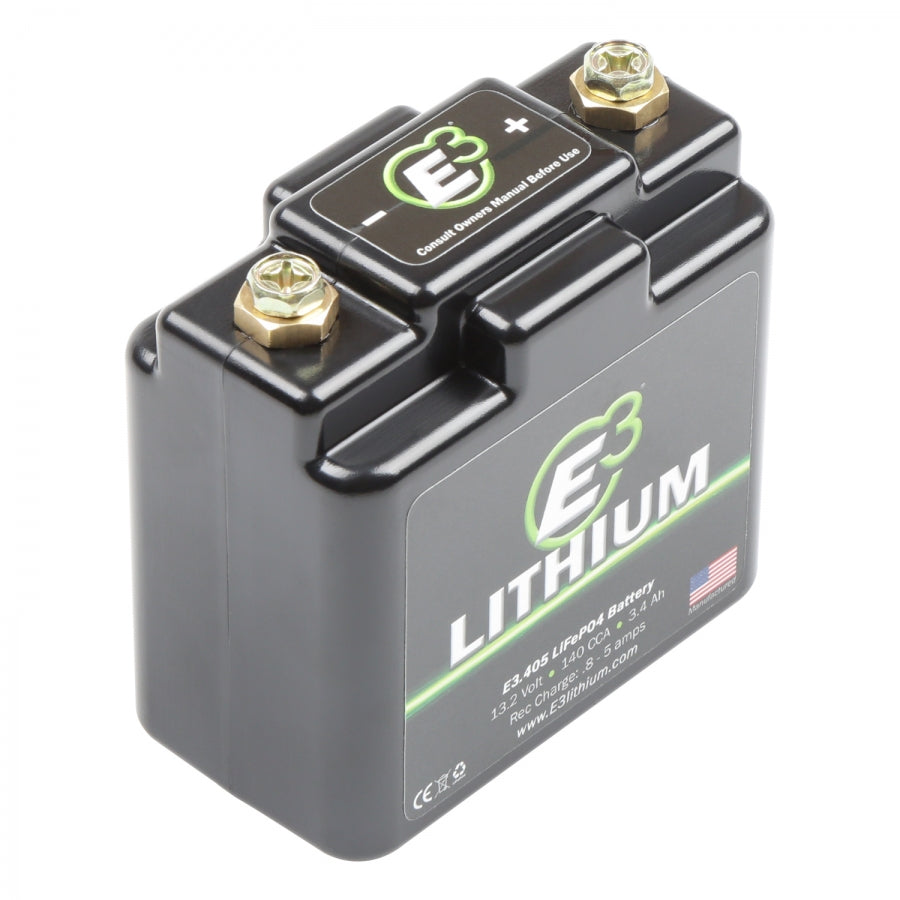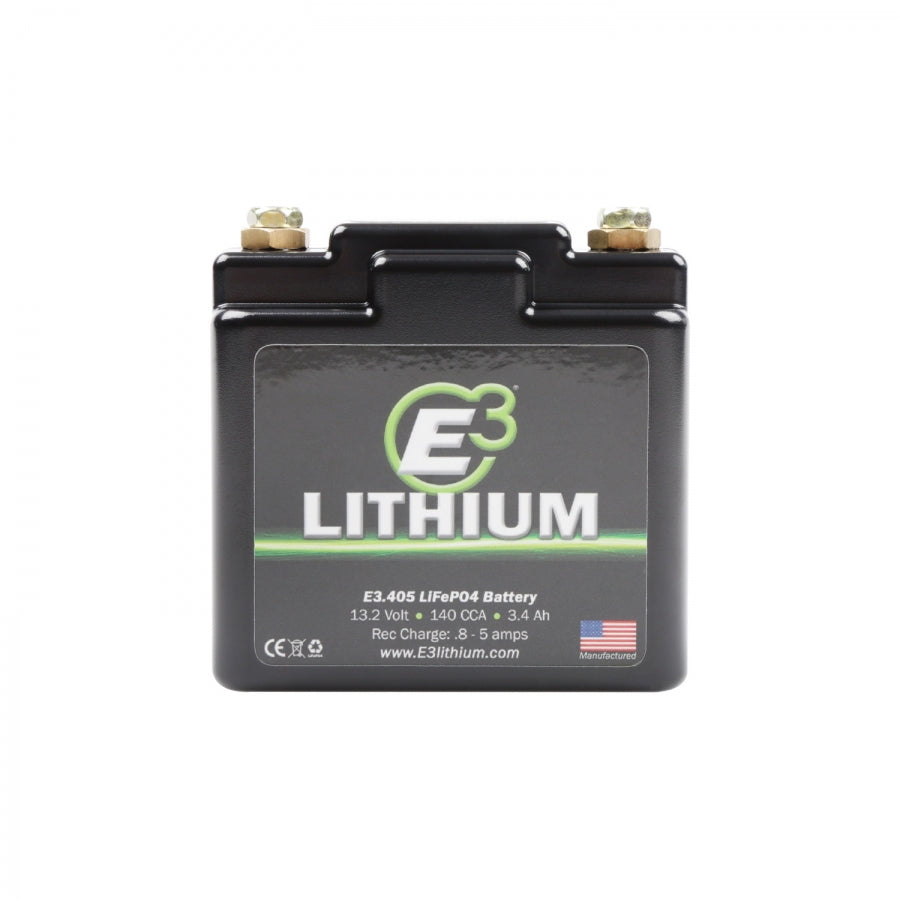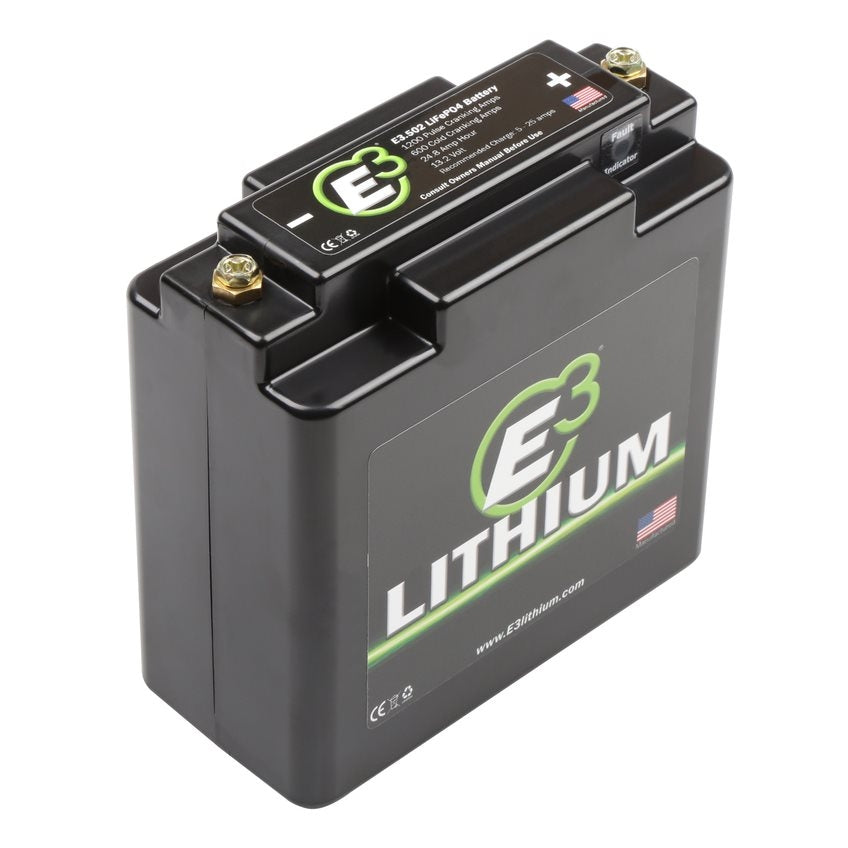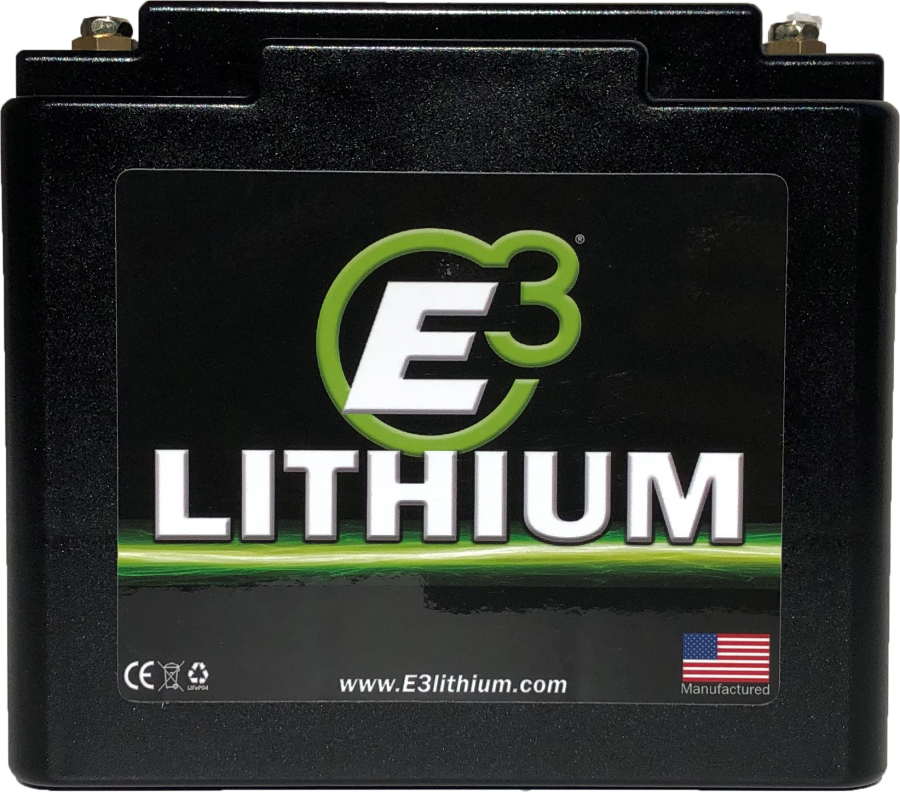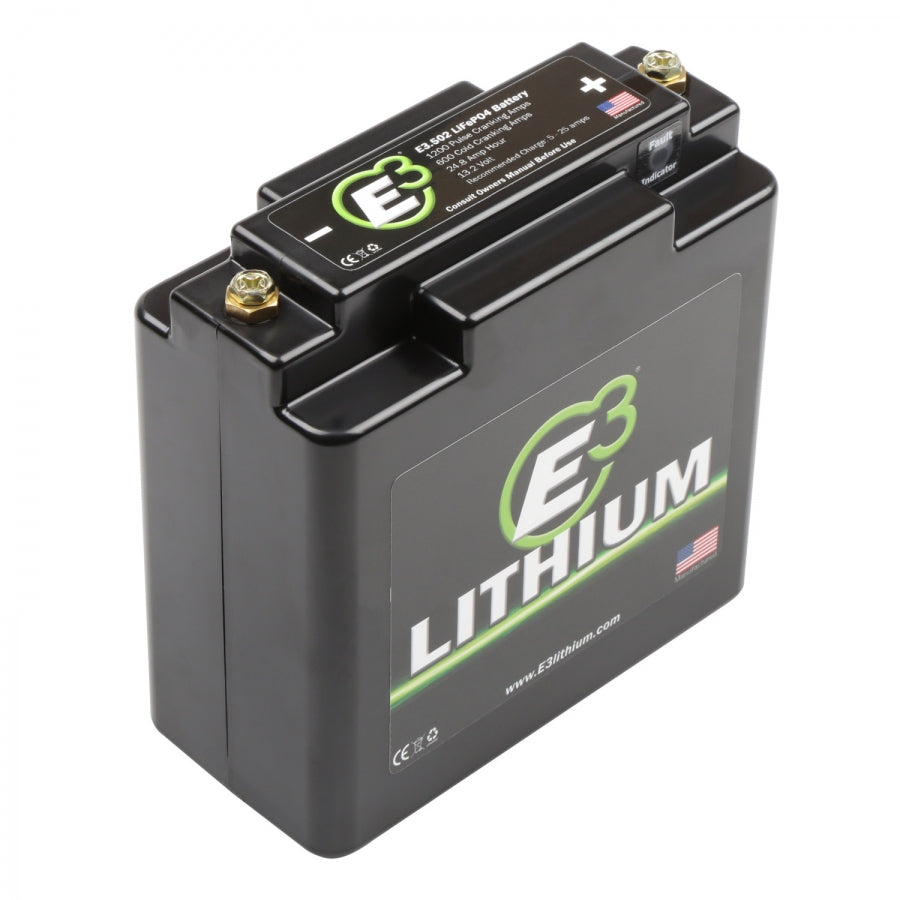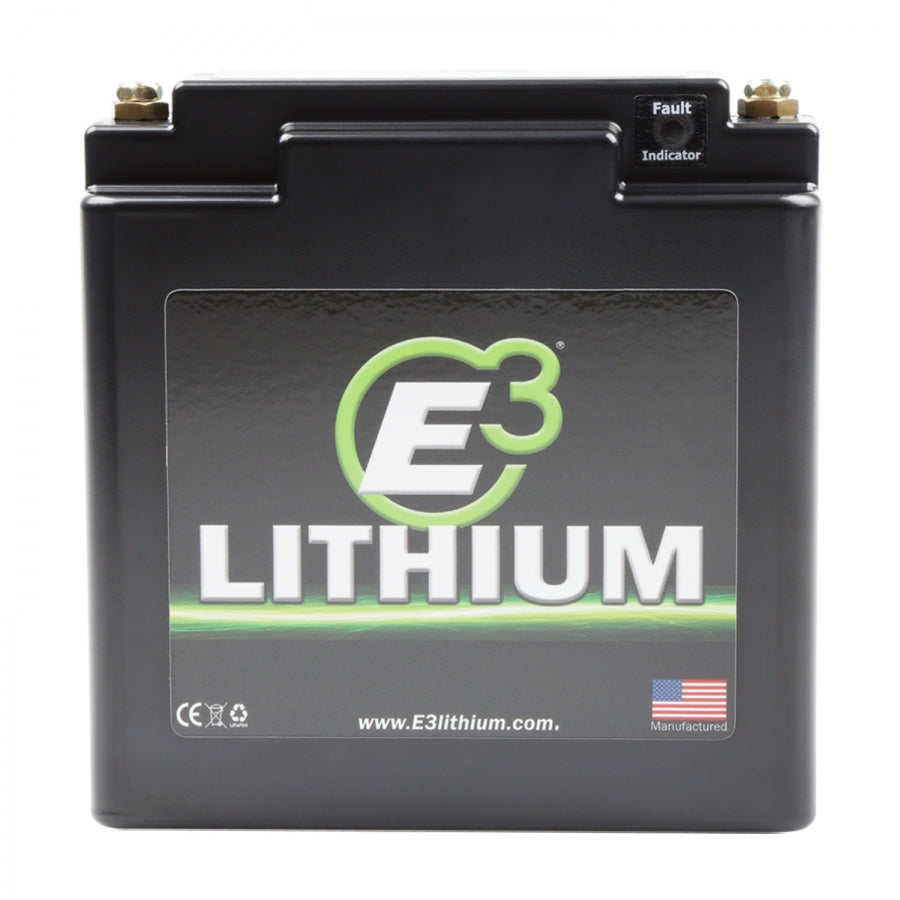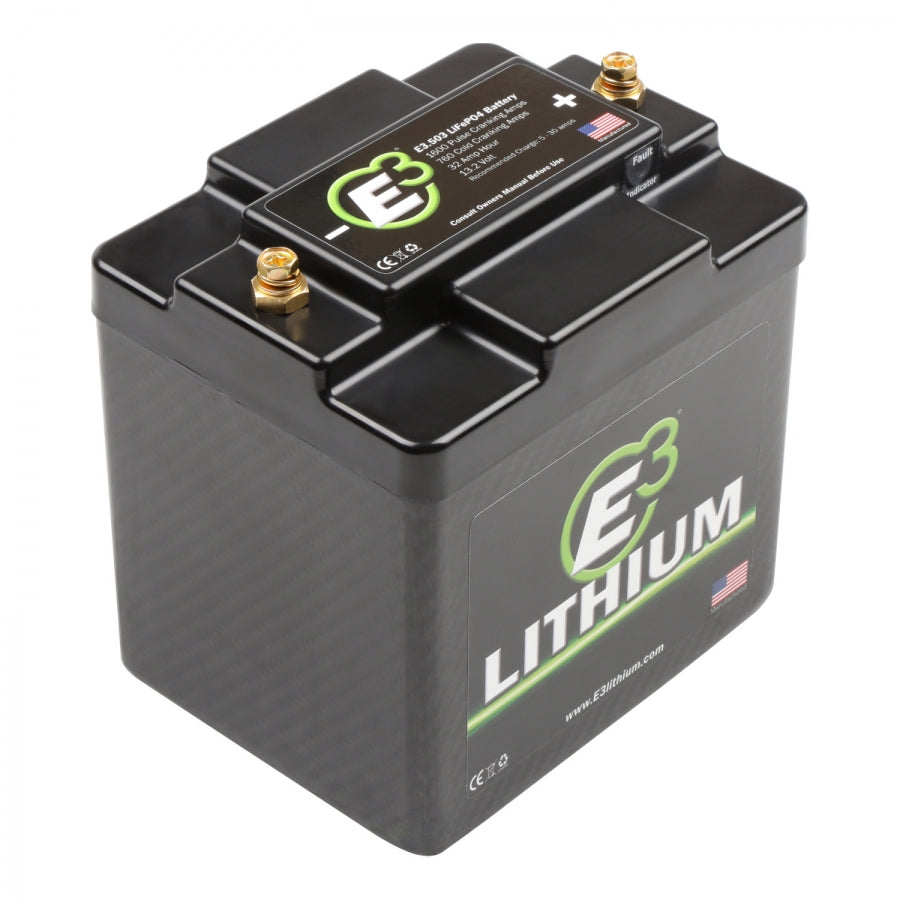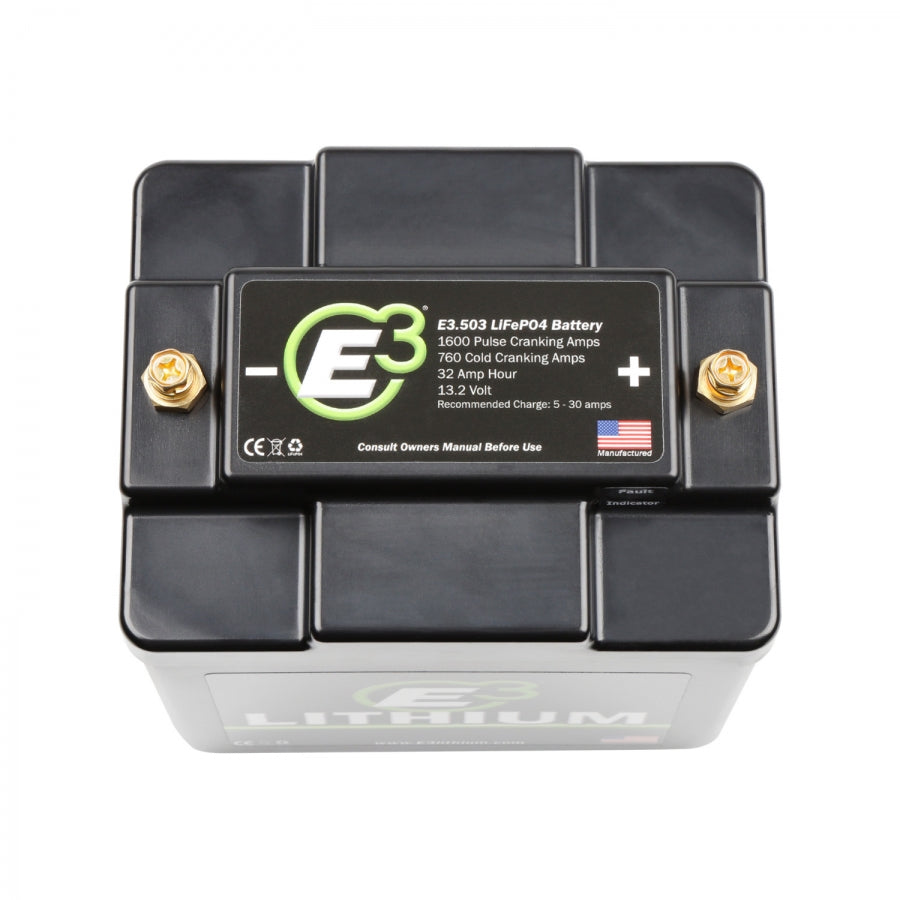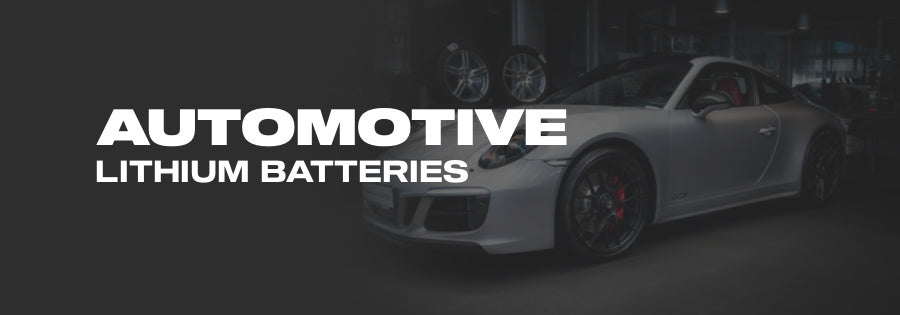
Automotive Lithium Batteries
Filters
8 products
Automotive Lithium Batteries
The fundamental difference between a conventional heat engine, like the motor in your car, and the latest thermal cars, like hybrids, plug-in electric cars, and fully electric vehicles are the processes used to transform stored energy into kinetic energy. Traditionally, energy is stored in chemical form in a vehicle’s starter battery and gas tank, then released through chemical reactions as a spark inside the engine ignites the fuel to release energy through combustion. Since electric cars store energy in batteries made from rare earth elements like lithium, nickel, cobalt, or graphite, reducing the transportation industry’s impact on the environment will depend heavily on improving mining practices and developing alternative sources of electricity to charge automotive lithium batteries.
Along with providing an eco-friendly line of E3 Lithium batteries, our focus remains on improving sustainability through the recycling, recapturing, and reusing automotive products that produce the spark, including:
Under normal use, electric vehicles don't overheat. While HEV, PHEV, and EV motors often have a coolant jacket to manage excess heat, it rarely gets warmer than a cup of coffee, which is much less heat than that released by a traditional combustion engine.
Nonetheless, it is important to keep batteries at the right operating temperature to optimize charge and discharge functions. As you can see, comparisons between electric vehicles and conventional vehicles are complex. However, as the world decarbonizes electricity generation to meet climate guidelines, battery manufacturing and vehicle operating emission levels for newer electric vehicles will also be reduced. At E3 Spark Plugs, we are committed to the same founding principles of energy, efficiency, and ecology that led to our DiamondFire line of environmentally friendly ignition products.
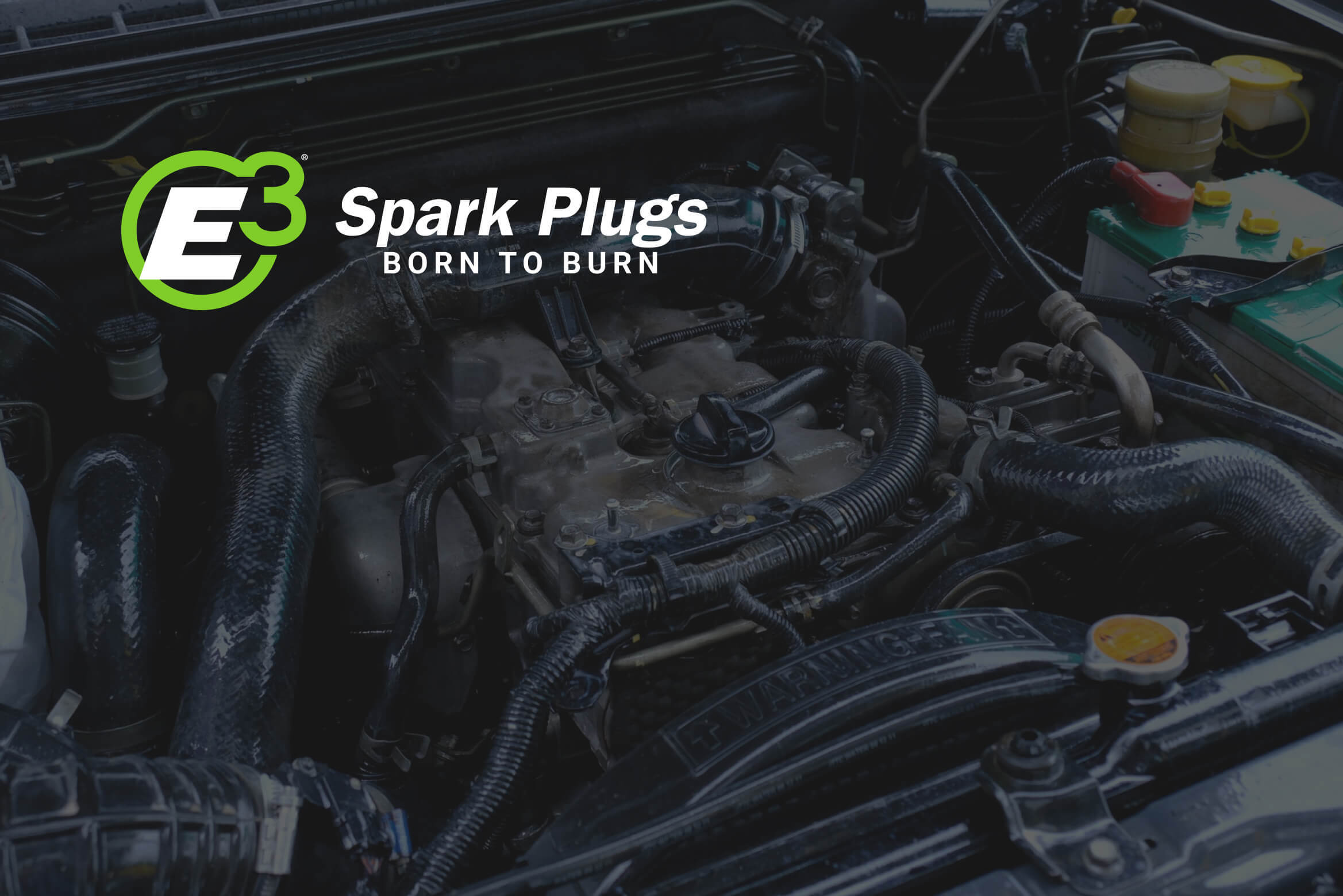
Different Types of Spark Plugs and Their Applications
Spark plugs are essential components in internal combustion engines. They serve a critical role in igniting the air-fuel mixture within the cylinders, which powers the engine. While engine spark p...
Distributed across nation
Find the E3 Spark Plugs in multiple stores
Free Shipping
Free US shipping on all orders of $35
Support
Our support team is available 10 a.m.- 5 p.m. EST
Secure Payment
All payments are processed securely




